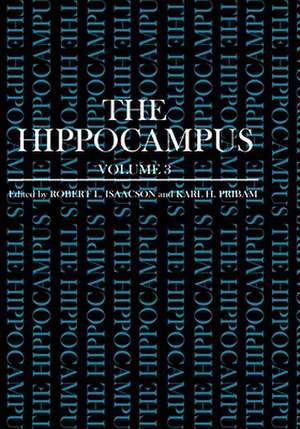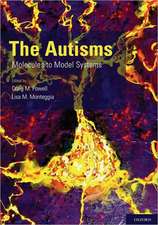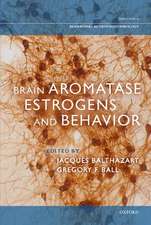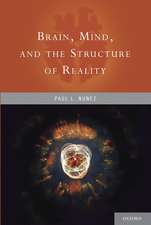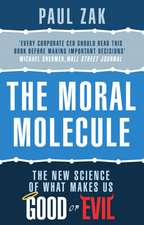The Hippocampus
Editat de R.L. Isaacson, K.H. Pribramen Limba Engleză Hardback – 30 aug 1986
| Toate formatele și edițiile | Preț | Express |
|---|---|---|
| Paperback (1) | 399.88 lei 6-8 săpt. | |
| Springer Us – 8 mar 2012 | 399.88 lei 6-8 săpt. | |
| Hardback (1) | 1237.30 lei 6-8 săpt. | |
| Springer Us – 30 aug 1986 | 1237.30 lei 6-8 săpt. |
Preț: 1237.30 lei
Preț vechi: 1508.90 lei
-18% Nou
Puncte Express: 1856
Preț estimativ în valută:
236.78€ • 257.11$ • 198.90£
236.78€ • 257.11$ • 198.90£
Carte tipărită la comandă
Livrare economică 22 aprilie-06 mai
Preluare comenzi: 021 569.72.76
Specificații
ISBN-13: 9780306421563
ISBN-10: 0306421569
Pagini: 438
Ilustrații: XVIII, 438 p.
Dimensiuni: 178 x 254 x 25 mm
Greutate: 1.01 kg
Ediția:1986
Editura: Springer Us
Colecția Springer
Locul publicării:New York, NY, United States
ISBN-10: 0306421569
Pagini: 438
Ilustrații: XVIII, 438 p.
Dimensiuni: 178 x 254 x 25 mm
Greutate: 1.01 kg
Ediția:1986
Editura: Springer Us
Colecția Springer
Locul publicării:New York, NY, United States
Public țintă
ResearchCuprins
1. An Executive Function of the Hippocampus: Pathway Selection for Thalamic Neuronal Significance Code.- 1. Introduction.- 2. Methods: Discrete Lesions and Recording of Unit Activity during Discriminative Avoidance Behavior.- 3. A Working Model for Limbic Telodiencephalic Function.- 4. Supporting Data.- 5. Implications for Human Memory Mechanisms.- 6. References.- 2. Brainstem Modulations of the Hippocampus: Anatomy, Physiology, and Significance.- 1. Introduction.- 2. Mechanisms of Theta Generation within the Hippocampus.- 3. The Cholinergic Septohippocampal Theta-Generating System.- 4. Brainstem Systems Controlling the Hippocampal EEG.- 5. Unit Activity of Brainstem Nuclei Implicated in the Generation of the Theta Rhythm.- 6. Ascending Brainstem-to-Septohippocampal Pathways Involved in the Control of the Hippocampal EEG.- 7. Significance of the Hippocampal Theta Rhythm.- 8. General Summary and Conclusions.- 9. References.- 3. Behaviorally Dependent Neuronal Gating in the Hippocampus.- 1. Neuronal Gating.- 2. Brainstem Influences on Neuronal Gating.- 3. Discussion.- 4. References.- 4. Selective Hippocampal Lesions and Behavior: Implications for Current Research and Theorizing.- 1. Introduction.- 2. Neuroanatomical Considerations.- 3. Early Research Using Lesions Limited to Hippocampal Subregions.- 4. The Use of Neurotoxins to Selectively Lesion the Hippocampus.- 5. Behavioral Effects of Selective Neurotoxin Lesions.- 6. Implications for Theories of Hippocampal Function and Current Research in the Area.- 7. Summary and Conclusions.- 8. References.- 5. Cholinergic and Catecholaminergic Modification of the Hippocampal Lesion Syndrome.- 1. Early Attempts to Alleviate the Behavioral Impairments by External Manipulations.- 2. Secondary Neurochemical Changes Following Hippocampal Damage.- 3. Cholinergie Manipulations and Hippocampal Lesion Effects.- 4. Glucocorticoid Changes and Hippocampal Lesion Effects.- 5. An Analysis of Hippocampal Effects in the Open Field.- 6. Spontaneous Alternation.- 7. Conclusions.- 8. References.- 6. Comparator and Buffer Memory: An Attempt to Integrate Two Models of Hippocampal Function.- 1. The Hippocampus as a Comparator.- 2. The Hippocampus as a Memory Buffer.- 3. Relationship between the Models.- 4. Antianxiety Drugs and the Septhohippocampal System.- 5. Conclusions.- 6. References.- 7. Role of the Hippocampus in Classical Conditioning of Aversive and Appetitive Behaviors.- 1. Introduction.- 2. Hippocampal Unit Activity during Classical Conditioning of the NM and CJM Responses.- 3. Intrinsic Changes in the Hippocampus as a Result of Classical Conditioning: Evidence and Potential Mechanisms.- 4. Relationship between Hippocampal Neuronal Activity and Learned Behavior 22..- 5. Multisynaptic Anatomical Pathways Underlying the Behavioral Consequences of Hippocampal Neuronal Plasticity.- 6. Summary.- 7. References.- 8. The Monkey and the Sea Horse.- 1. Introduction.- 2. Behavioral Profile of Adult Monkeys with Damage to the Hippocampal System.- 3. Effects of Hippocampal Damage as a Function of Age of Lesion.- 4. Associative Learning Spared, Recognition and Associative Memory Not Spared, after Early Ablations of Hippocampus.- 5. Summary and Comments.- 6. Conclusions.- 7. References.- 9. Hippocampal Function and Memory for Temporal Context.- 1. Introduction.- 2. Comparative Cognition.- 3. Memory for the Temporal Context of an Event.- 4. Animal Tests of Working and Reference Memory.- 5. Memory for Temporal Intervals.- 6. Conclusions.- 7. References.- 10. Memory for Unique Instances: Temporal Lobe and Hippocampal Dependence.- 1. The Working Memory Model of Temporal Lobe Deficits.- 2. A New Animal Model of Temporal Lobe Memory Deficits.- 3. A Test of the Model.- 4. Application of the Model to Cognitive Place Learning.- 5. The Value of Unique Instance Memories.- 6. Evaluation of the Model.- 7. Conclusions.- 8. References.- 11. The Hippocampal System and Recombinant Processing.- 1. Introduction.- 2. Limbic versus Nonlimbic Learning and Memory.- 3. Hippocampus versus Amygdala: Novelty and Familiarity.- 4. The Hippocampus and Competence.- 5. Whither Now?.- 6. References.
